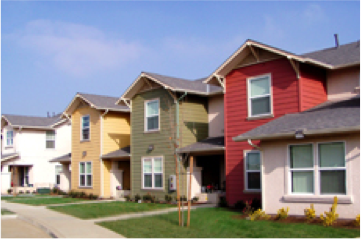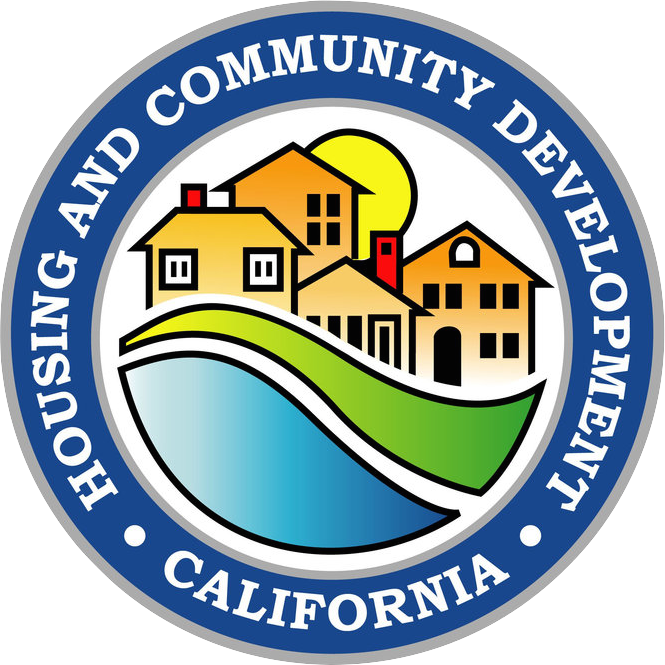Review and Revise
The review and revise” requirement is an important feature of the housing-element update. A thorough review facilitates a comprehensive update and ensures the housing element can be effectively implemented in the next planning period. This Page has been amended to incorporate new requirements pursuant to AB 139 (Statutes of 2019).
Government Code

Government Code (GC) Section 65588 requires: “Each local government shall review its housing element as frequently as appropriate to evaluate all of the following: (1) The appropriateness of the housing goals, objectives, and policies in contributing to the attainment of the state housing goal. (2) The effectiveness of the housing element in attainment of the community's housing goals and objectives. (3) The progress of the city, county, or city and county in implementation of the housing element.” (4) The effectiveness of goals, policies, and related actions to meet the community’s special housing needs. GC 65583(a)(7).”
Requisite Analysis
Analysis is required in three areas:
- Effectiveness of the element — A description of the actual results or outcomes of the prior housing-element’s goals (what happened), objectives, policies, and programs. The results should be quantified where possible (e.g., number of units rehabilitated) and may be qualitative where necessary (e.g., mitigation of governmental constraints).
- Progress in implementation — For each program, the analysis should compare significant differences between what was projected or planned in the earlier housing element and what was achieved. Analyze the differences to determine where the previous housing element met, exceeded, or fell short of what was anticipated.
- Appropriateness of goals, objectives, policies, and programs — A description of what has been learned based on the analysis of progress and effectiveness of the previous housing element. A description of how the goals, objectives, policies, and programs in the updated housing element are being changed or adjusted to incorporate what has been learned from the results of the previous element.
- Special needs population — A description of how past programs were effective in addressing the housing needs of the special populations. This analysis can be done as part of describing the effectiveness of the program pursuant to (2) if the jurisdiction has multiple programs to specifically address housing needs of special needs populations or if specific programs were not included, provide a summary of the cumulative results of the programs in addressing the housing need terms of units or services by special need group.
Useful Data Sources
- Annual general plan progress reports, as required by Government Code Section 65400. Many communities cross reference and use the annual progress report [GC 65400(b)(1)] as a useful source of information for review of the previous housing element.
- Department of Finance, Demographic Research Unit.
- Consolidated Plan Reports.
Sample Tables
The following sample tables can help in organizing critical information pertaining to housing-element requirements. The information provided in the tables should be tailored to the jurisdiction and followed by appropriate analysis. (Note: These sample tables are not intended to be a substitute for addressing the analytical requirements described in the statute.)
Progress Toward Meeting Housing-Element Goals and Objectives Table
| Progress Toward Meeting Housing-Element Goals and Objectives | ||||
|---|---|---|---|---|
| Policy/Program | Objective (quantified/ qualified) |
Result | Evaluation | Continue/ Modify/ Delete |
| Action: Apply for small city Community Development Block Grant funding through HCD by 2012 to assist in the rehabilitation of 20 lower-income housing units. Timing: December 2012 Responsibility: Housing Department |
Assist in the rehabilitation of 20 lower-income housing units. | In 2012, the city applied for and received a Community Development Block Grant for $500,000 for the rehabilitation of housing units. The city has rehabilitated 15 units since 2012. | Mostly successful. A total of 15 households have been assisted through this program. However, due to limited marketing and increased costs, the city was unable to meet its goal of assisting 20 households. | The city will continue this program and reapply for funding in 2017 Program will be strengthened by marketing through local newspapers and notices sent to households in both Spanish and English. |
Progress Towards Meeting Quantified Objectives Table
| Progress Towards Meeting Quantified Objectives | |||
|---|---|---|---|
| Income Groups | New Construction | Rehabilitation | Conservation and Preservation |
| Very Low | |||
| Low | |||
| Moderate | |||
| Above Moderate | |||
| TOTAL | |||
Housing-Element Law Implementation Requirement
(GC 65584.09, Chapter 614, Statutes of 2005)
"(a)For housing elements due on or after January 1, 2006, if a city or county in the prior planning period failed to identify or make available adequate sites to accommodate the regional housing need allocated, then the city or county shall, within the first year of the planning period of the new housing element, zone or rezone adequate sites to accommodate the unaccommodated portion of the regional housing need allocation from the prior planning period.
(b) The requirements under subdivision (a) shall be in addition to any zoning or rezoning required to accommodate the jurisdiction’s share of the regional housing need pursuant to Section 65584 for the new planning period.
(c) This section does not diminish the requirement of a city or county to accommodate its share of the regional housing need for each income level during the planning period including the obligations to (1) implement programs, (2) timely adopt a housing element with an inventory described and a program to make sites available which can accommodate the jurisdiction’s share of the regional housing need."
| Question | Yes | No |
|---|---|---|
| Did the inventory of sites required by Section 65583(a)(3) identify adequate sites? | ||
| Were the program actions to rezone or provide adequate sites fully implemented? |
| Question | Yes | No |
|---|---|---|
| Failed to adopt an updated housing element for the prior planning period? | ||
| Adopted a housing element found out of compliance by HCD due to failure to substantially comply with the adequate sites requirement? | ||
| Failed to implement the adequate sites programs to make sites available within the planning period? | ||
| Failed to identify or make available adequate sites to accommodate a portion of the regional housing need? |
If the answer to any of the last four questions was yes, the jurisdiction must zone or rezone adequate sites to address the unaccommodated housing need within the first year of the new planning period. To demonstrate adequate sites for the new planning period, the updated housing element must identify the unaccommodated housing need by income level. To determine the unaccommodated need, jurisdictions could take the following steps:
- Subtract the number of units approved or constructed (by income) since the beginning of the previous planning period’s regional housing needs allocation baseline data. Must include information on how affordability was determined.
- Subtract the number of units that could be accommodated on any appropriately zoned sites specifically identified in the housing element adopted for the previous planning period (not counted above).
- Subtract the number of units accommodated on sites that have been rezoned for residential development pursuant to the site identification programs in the housing element adopted for the prior planning period.
- Subtract the number of units accommodated on sites rezoned for residential development independent of the sites rezoned in conjunction with the housing element’s site identification programs as described above.
Sample Table to Calculate Unaccommodated Housing Need
Smart City had a regional housing needs allocation of 1,000 units. While the housing element demonstrated it had sufficient sites to accommodate 850 units, it contained a rezone program to accommodate the 150-unit remaining need for lower-income households. By the time of the next housing-element update, the city had not completed the rezoning as described in the housing-element program action. During the previous five years, 1,025 units were constructed (including 175 units affordable to lower-income households). Although the rezoning program was not completed using sites described in the housing element, the city was able to rezone a smaller two-acre parcel to high-density residential, which could accommodate 40 lower-income units.
| Very Low | Low | Moderate | Above Moderate | |
|---|---|---|---|---|
| Regional Housing Needs Allocation | 150 | 250 | 200 | 400 |
| 1) Units constructed | 50 | 125 | 100 | 750 |
| 2) Previously identified sites currently available (capacity) | 25 | 50 | 100 | N/A |
| 3) Sites rezoned pursuant to housing-element program | 0 | 0 | N/A | N/A |
| 4) Sites rezoned (other) | 20 | 20 | 0 | N/A |
| Remaining Need | 55 | 55 | 0 | N/A |
| Total Remaining Need |
110 |
|||
As a result, Smart City has an unaccommodated need of 110 units for lower-income households and must identify or rezone sufficient sites to address this need within the first year of the new planning period. This requirement is in addition to the requirement to identify other specific sites to accommodate the regional housing needs allocation for the new planning period.
| Very Low | Low | Moderate | Above Moderate | Total | |
|---|---|---|---|---|---|
| Unaccommodated Regional Housing Needs Allocation — 4th Cycle | 55 | 55 | 0 | 0 | 110 |
| Regional Housing Needs Allocation — 5th Cycle | 110 | 200 | 185 | 375 | |
| Total Regional Housing Needs Allocation | 165 | 255 | 185 | 375 |
- Once a determination has been made that an unaccommodated housing need exists, within the first year of the new planning period, cities and counties must identify sites that are appropriately zoned, or will be appropriately zoned, to meet the unaccommodated housing need.
- The sites “made available” as part of the rezone program must comply with the site suitability requirements in Government Code Section 65583.2.
- Within the first year of the new planning period, cities and counties must adopt and complete program commitments to zone and/or rezone sites to address the unaccommodated housing need from the previous planning period for which sites were not identified. Please note: Once this timeframe has lapsed, the California Department of Housing and Community Development cannot find a jurisdiction’s housing element in compliance until the required zoning or rezoning is complete and the housing element is amended to reflect conformance with the requirement.
- If a jurisdiction rezoned candidate sites to accommodate its shortfall, but failed to implement all statutory requirements of 65583.2(h), the rezone program was not fully completed and, therefore, did not demonstrate adequate sites in the prior planning period. The jurisdiction must take action to remedy any portion of the adequate sites program requirements that it failed to implement. Consistent with 65584.09(a), program actions to “remedy” must take place within one year of the new planning period. These remedies must remain in place for the duration of the 5th cycle.
Helpful Hints
- Utilize the jurisdiction’s past housing-element annual progress reports.
- Contact stakeholders, such as nonprofit developers, advocates, community members, and service providers, to assist in evaluating program effectiveness.
Receive a weekly notice listing all housing elements received for review (select "State Housing Element Law”).

